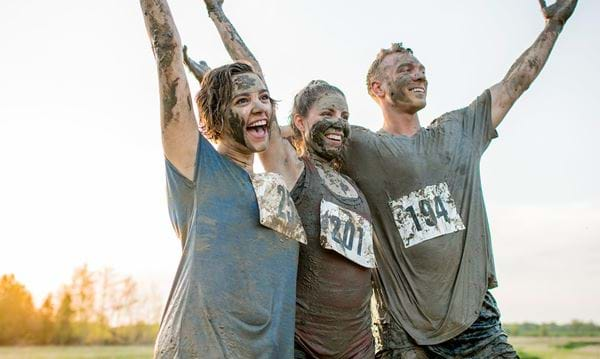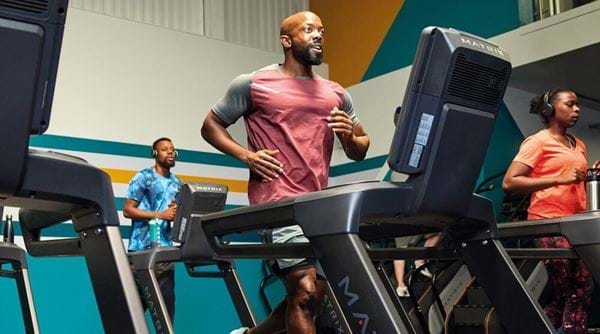8 Essential Marathon Training tips

Running a marathon is one of those benchmark fitness challenges which can leave you feeling like a genuine superhuman, and for good reason. It takes some serious planning and training to get ready for a marathon, and that can take a while.
If running a marathon is a serious goal of yours, it's time to audit your fridge, lace up your shoes and get busy working towards it today.
Read on for 8 of our top tips for marathon training, to help get you ready to take on a marathon challenge.
If you’re running your first marathon and need help with your training, you might also want to check out our full 20 week marathon training plan. Completely new to running but want to get up to marathon level? Head over to our total beginners training plan.
-
Get your health checked before training
However you look on it, marathons are tough on the body. With 26.2 miles to cover, you’re putting yourself at risk of injury at the best of times – and especially if you’re not physically prepared, trained, and warmed up in advance.
Don’t forget that history’s first mythical marathoner apparently found the going so tough that it killed him outright.
Before you throw yourself head first into training, speak to your doctor and get a check-up.
-
Ramp up your training slowly and cautiously
You know that saying, “this is a marathon, not a sprint”? Well, believe it or not, it applies to your actual marathon training perfectly.
One of the easiest ways to sustain a marathon-related injury is by trying to do too much, too soon, in training. Start with a small, easily manageable training routine and expect to spend at least a year building up your fitness and your “base mileage” (the distance you cover on your weekly runs) before taking on the main challenge.
When it comes down to it, it’s better for you to be going into the marathon slightly less fit than you could be, but otherwise healthy, than slightly more fit, but riddled with injuries.
-
Hit smaller targets on your way to the marathon
As you might have guessed by this point, training for a year or more can lose its appeal without waypoints and goals to achieve along the way. One great way of keeping your training focused, consistent and interesting is to set yourself the goal of running smaller races along the way. For example, 5ks, 10ks, or half marathons.
-
Allow enough recovery time between training sessions, but not too much!
Studies have already found that, within a certain margin, lower training frequency is not associated with reduced marathon performance.[1]
It should come as no surprise either, that other research has also found over training to have significant negative effects on athletic performance, causing stagnation and a decrease in maximum working capacity over time.[2] That’s in addition to the extra strain placed on your joints, and the added potential for injury if you don’t allow yourself enough time to recover.
Recovery time isn’t as simple as just taking days and weeks off whenever you feel like it, though. At least one 2013 study found that trainees who ran less than 30km per week were actually at higher risk of injury than those who ran 30-60km per week.[3]
The simple message is to train just enough, and be wary of over or under training. Instead of trying to train 7 days a week, keep it to a more realistic routine of training every other day, at least to begin with.
-
Include weekly "long runs" in your training routine
While the majority of your marathon training will consist of shorter, more frequent runs, there’s just no substitute for weekly “long runs” in order to get your body used to being out on the road for hours at a time. These will be the most taxing training sessions that you do, so time them to be the last training session you do each week and allow for a couple of days off afterwards if necessary.
-
Get plenty of carbs in your diet
When training intensively – and especially before going on a long run – you’ll need to make sure that you’re getting enough carbohydrates in your system.
Essentially, there are 3 energy systems in the body. The ATP System (which relies on creatine phosphate) is used for quick, explosive activities like sprints. The Lactate System is another anaerobic system for generating short-term energy, which relies on creating additional ATP (adenosine triphosphate). The third system, the Aerobic system, is the one which predominantly comes into play during distance runs, and it relies on various processes to provide a steady stream of energy for the body.[4]
All these energy production systems rely on glycogen and blood glucose to some degree, even if they’re not utilising it directly.
Have a carb-rich snack before every run, and a carb heavy meal once you return home to replenish glycogen. For longer runs, consider keeping some high-glucose energy gels in your pocket to keep you going if you find yourself flagging on the way.
-
Understand and replicate your marathon environment
Take a look at the route your marathon will be following carefully before you start training. Will you be running a hilly course, or will it be totally flat? What kind of ground will you be running on? What kind of weather can you be expecting? Considering this information will enable you to prepare more carefully for your event. If you’re likely to be facing hills, then replicate this in your training, whether that’s outside, or using the incline feature on the treadmill at the gym. If you do all your training on grass, you may find a completely different feel if your marathon event takes place on asphalt. Make sure to practise running outside so you can prepare your body for the effects of the wind, rain showers or heat.
-
Practice running in your kit
Running a marathon can put your body through a lot, so making sure you’re dressed as comfortably as possible is important - that means breathable materials that are soft against your skin. You’ll want to make sure you’ve practised running in your marathon kit several times before the event - that way you know your clothing or shoes won’t cause you any discomfort. If you wear a brand new pair of running shoes on the big day, then you risk suffering blisters where your footwear hasn’t been broken in. The same goes for socks, shorts, leggings, sports bra, t-shirt, vest - whatever you’re likely to wear on the day.
You can learn more about how to improve your running over on our Running hub, where we cover a wide range of tips and advice for all skill levels. For example, this article on how to prepare for a race will help you get ready for any event. To help with your fitness, you can download the free PureGym App, which includes a range of workouts and classes to keep you on track.
[1] http://shapeamerica.tandfonline.com/doi/abs/10.1080/02701367.1994.10607638
[2] https://www.ncbi.nlm.nih.gov/pubmed/1752709
[3] https://www.ncbi.nlm.nih.gov/pmc/articles/PMC3625790/
[4] https://runnersconnect.net/running-nutrition-articles/energy-systems-running/


